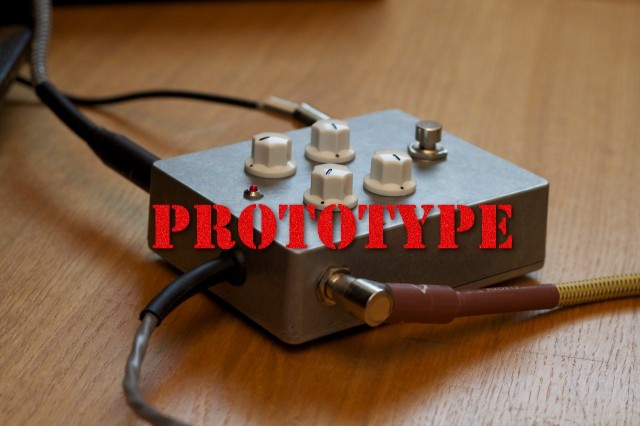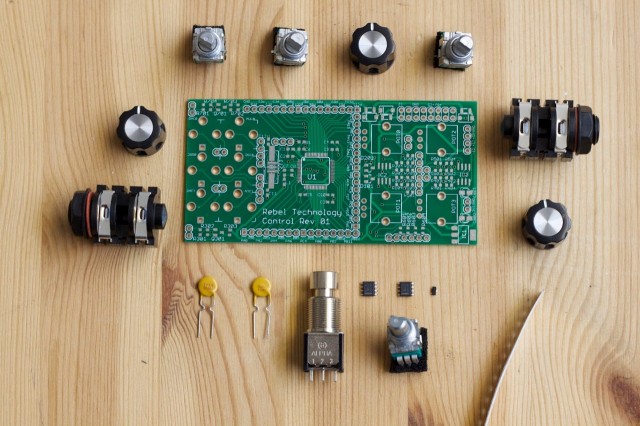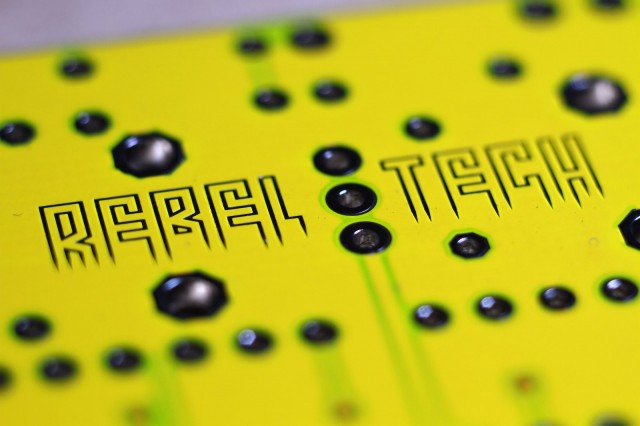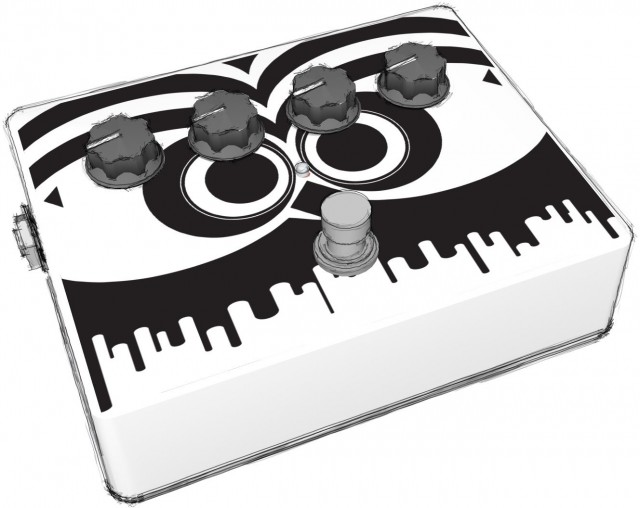
Yes, this looks like an ordinary stompbox, but it is reprogrammable. Can I put this massive “prototype” disclaimer over any photos of me tagged on Facebook? No? Photo courtesy the OWL folks.
There are stompboxes. They are — for lack of a better word — foot worthy. You can step on them, in a way that is less possible with a computer. (Well, sure, somewhere amidst an endless spinning color pinwheel you may have wanted to step on your MacBook Air, but then thought better of it – financial investment and whatnot.)
Then, there are computers. They can do everything. That stompbox is one particular distortion effect. And it is always just that one distortion.
But what if you could have both?
As embedded technology continues its march toward greater user friendliness, lower cost, and greater sonic powers, it seems the time is right for hardware that combines the durability of dedicated sound gear with the open-ended potential of computers. That is, it’s not really clear where the computer ends and the stompbox begins.
OWL isn’t the first project to take on this dream, but it’s looking more practical than those that came before.
The project promises open source hardware, with open code, that can be reprogrammed into new sound effects simply by uploading new code. As with a new generation of low-power tablets and phones and the like, there’s an ARM chip at its heart. (The ARM Cortex M4, to be exact.)
If you’re a guitarist who writes your own C++ code – yes, there’s actually a sizable group of those – you can have a ball making your own DSP routines. If you’re not, OWL promises a library of patches, presumably growing with more contributions from the open source community.
There’s not a whole lot to look at at this point – while they’ve got a GitHub repository going, it includes only a little bit of sample code. But in the video, the results look impressive, perhaps enough – given an experience team – for some to go ahead and take the leap of supporting the crowd-funded Kickstarter project.
Patches load directly via USB – so reprogramming the pedal is a pretty easy affair for the average user. If you are a coder, you can use simple C++ without the usual mucking about with hardware-specific code. (That’s where, to me, the advantages of newer ARM chips comes in: there’s enough horsepower here that you don’t have to fret over every spare cycle, coding close to the iron. But if you do want to use specific ARM functions, those are supported in the framework, too.)
What you get in the product appears to be a no-nonsense hardware platform with the requisite jack connections and stomp-able switches, and a straightforward code framework. It’s not quite as idiot-proof as something like Arduino, but to a growing army of DSP students around the world, it’s a beautiful blank canvas.
It’ll be fun to watch this evolve. And there appears to be at least enough crowd funding to get it rolling – with additional funding “unlocking” additional work from the team on other features. See more at the Kickstarter site:
OWL Programmable Effects Pedal [Kickstarter]
The team has as its members a number of friends of CDM, including the maker of the Blipbox, and others revolving around the lovely London Music Hackspace.
I like in a way that the product isn’t too ambitious: it’s simple, uses a smart platform as its basis, and focuses on things people need.
It seems there’s more to do in this space. Years ago, the talented originator of Winamp and Reaper made the JesuSonic, dedicated hardware for effects cheekily hidden in a massive crucifix. But now, that sort of technology can easily hit the mainstream – with or without weird religious iconographic housings. The other logical direction seems to be more traditional computers running Linux, the sort which could take uploads dynamically using tools like Pure Data, without having to reprogram the pedal between each set. But both directions – embedded computers and dedicated hardware – hold potential, and both could be reprogrammable. OWL could be the herald of things to come, and if successful, the first real case study in making those things work.


